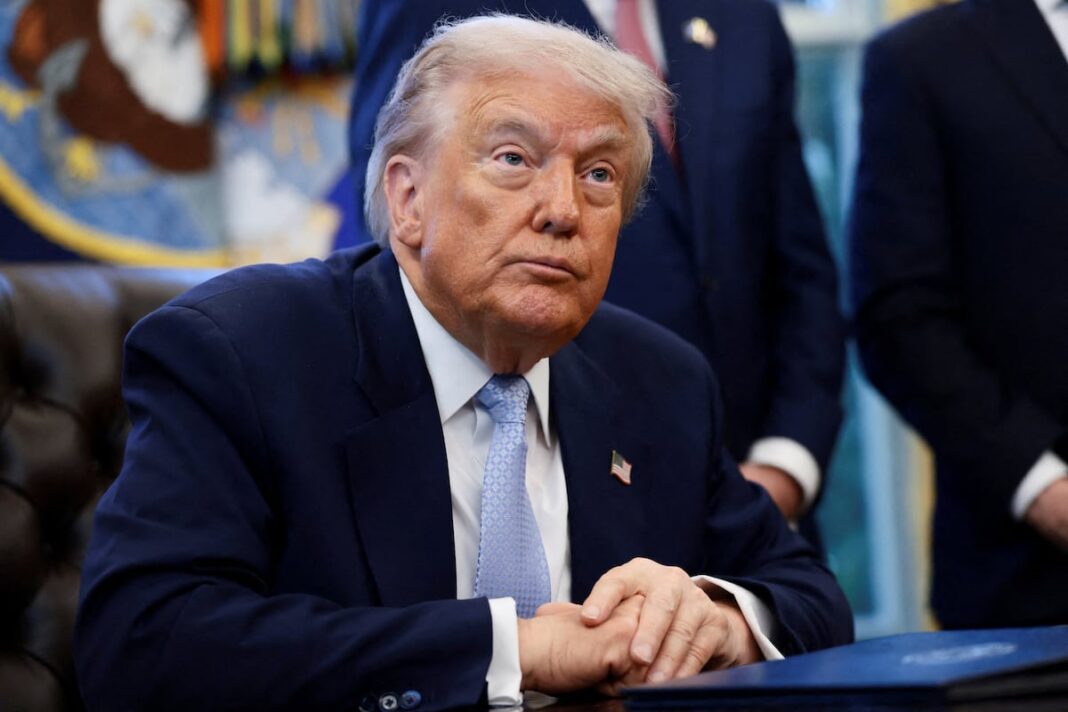The Epstein Files Transparency Act: A Critical Turning Point
In a significant move on Wednesday night, President Donald Trump signed the Epstein Files Transparency Act into law, marking a pivotal moment in the long-standing quest for accountability regarding Jeffrey Epstein’s notorious sex trafficking network. After months of resistance to releasing crucial documents, Trump’s approval signals a shift in approach, illuminating the complex interplay of politics and justice surrounding this high-profile case.
An Unexpected Legislative Consensus
In a surprising turn of events, the legislation passed with overwhelming bipartisan support. Only one dissenting vote came from Representative Clay Higgins, a Trump loyalist from Louisiana. With 427 members of the House and 100 senators backing the bill, Trump’s options became limited once it reached his desk. This rare political unity suggests the urgency felt by lawmakers to address the lingering questions and public outcry related to Epstein and his accomplice Ghislaine Maxwell, both of whom have long cast shadows over the corridors of power in Washington and beyond.
Understanding the Law’s Provisions
The Epstein Files Transparency Act mandates Attorney General Pam Bondi to release unclassified documents that detail Epstein’s sex trafficking operations. Bondi, who had previously hesitated to disclose these materials, has been given a 30-day deadline to comply after the law’s signing. The documents in question encompass a vast repository of records, from flight logs and personal communications to immunity agreements and internal reports.
This extensive collection comprises millions of pages, promising to shed light on the multitude of individuals involved or aware of Epstein’s criminal activities. Yet, the new law does come with stipulations, allowing the Department of Justice to retain information that could compromise ongoing investigations or the safety of victims.
The Stakes for Victims and Survivors
For the victims of Epstein’s crimes, this moment is fraught with both hope and apprehension. Survivors gathered at the Capitol to support the act expressed concerns that the released material might be overly censored, potentially masking the full extent of Epstein’s network and the high-profile individuals connected to it. Many have laid blame not only on Epstein but also on the powerful figures who might have turned a blind eye to his activities.
While Bondi emphasized the department’s commitment to protecting victims, questions linger regarding what specific information will be disclosed and how much may be redacted. The law requires transparency in the publication of these materials, but it also empowers the DOJ to censor certain details, thus raising the crucial question: who gets to determine what is too sensitive to be disclosed?
A Shift in Tone from the Department of Justice
The Attorney General’s previous reluctance to release any documents starkly contrasts with her current obligation following the law’s passage. When pressed for clarity about the shift in stance regarding document release, Bondi’s answers were vague, suggesting the emergence of “new information” but offering little elaboration. This ambiguity invites skepticism and speculation about the depth of her department’s previous knowledge regarding the nature of the materials held by the DOJ.
Reports have indicated that during a recent meeting at the White House, Bondi cautioned Trump that his name appeared in numerous documents tied to Epstein. This revelation adds another layer of complexity to the political dynamics surrounding the case, hinting at the personal stakes for those involved at the highest levels of governance.
Ongoing Investigations and Public Scrutiny
As part of his commitment to transparency, President Trump has directed the DOJ to investigate names linked to Epstein that have surfaced over the years. This order amplifies the urgency for accountability and could potentially lead to further disclosures. Yet it also raises apprehensions among the public and advocates who fear that rather than expediting justice, these ongoing investigations could delay meaningful transparency regarding the details of Epstein’s extensive network.
Moreover, the expectation for Bondi to furnish Congress with a report detailing any censorship decisions within 15 days of the publication heightens scrutiny and places additional pressure on the DOJ not to falter in its obligations.
Final Thoughts on the Implications
As the nation anticipates the forthcoming disclosures, the Epstein Files Transparency Act represents not only a victory for advocates seeking justice for victims but also a critical moment in the large-scale reckoning with power dynamics in American society. While the release of these documents may bring some closure, it also serves as a reminder of the pervasive influence of wealth and privilege that often sidesteps accountability, leaving many questions still unanswered.
The implications of this law will reverberate beyond the immediate context, potentially reshaping discussions around institutional accountability and the protection of vulnerable individuals within powerful networks—a narrative that continues to unfold even as this new chapter begins.



